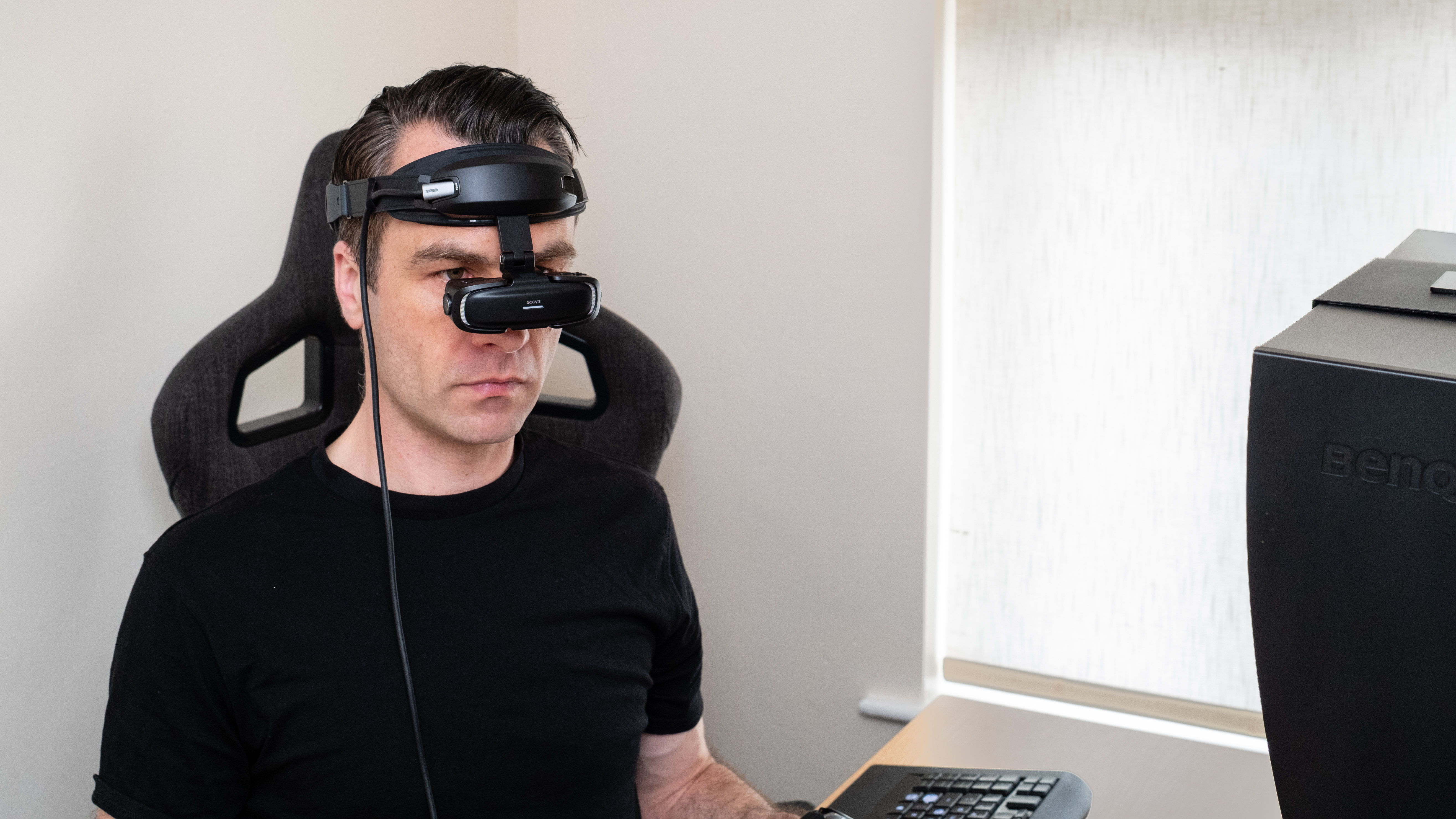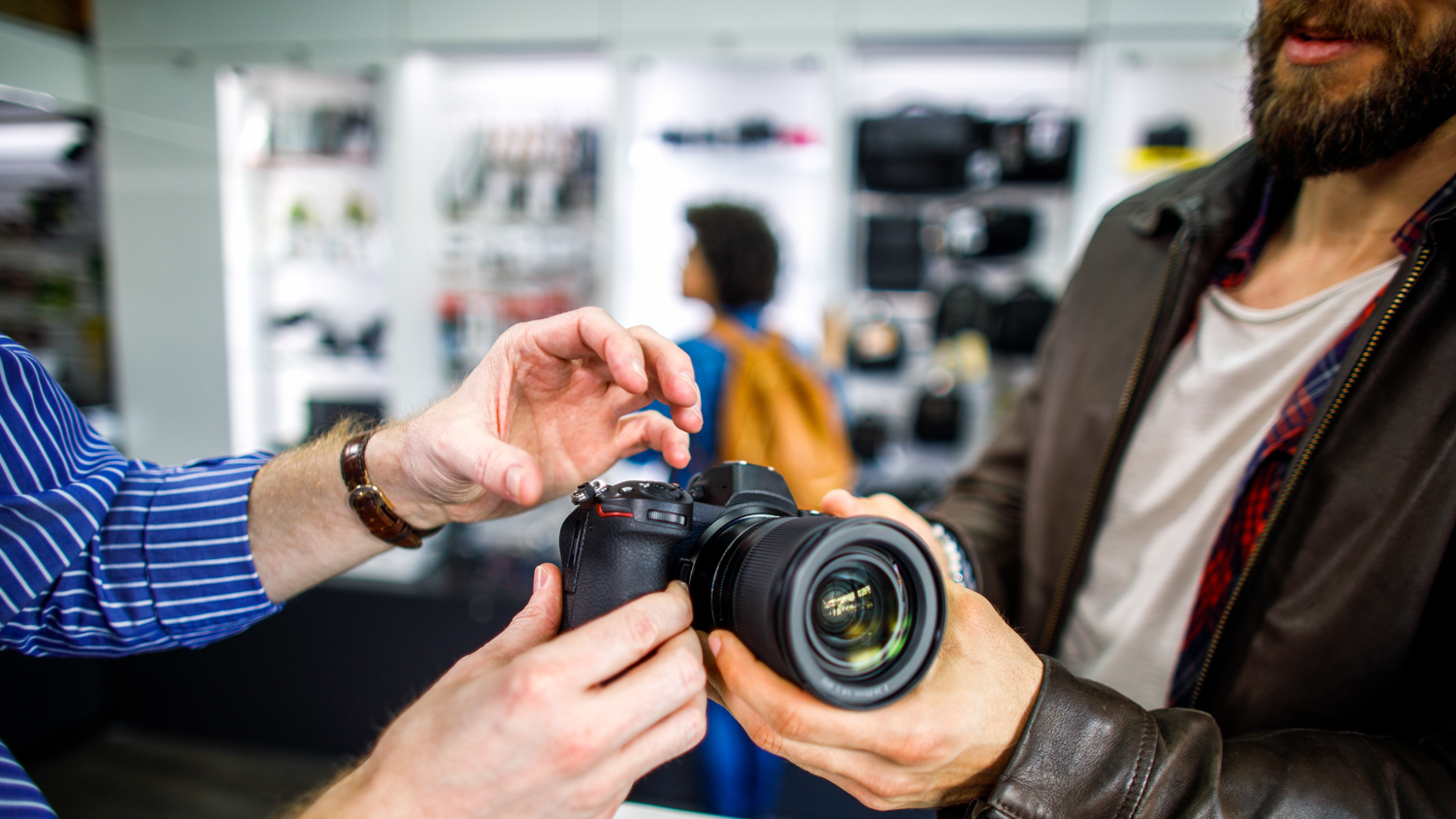110-inch live view for my camera! This pair of smart glasses revolutionized my focus and productivity
The Goovis Art is a head-mounted display that provides situational awareness alongside a whopping 110-inch viewing experience

As I sit here typing on a computer screen that's the equivalent of 110 inches viewed at 4 meters, I can't help but be blown away by what's in front of me. The Goovis Art is a head-mounted display that has enabled me to focus on the job at hand while providing a more comfortable viewing experience when working on my laptop for long periods.
In a nutshell, you have one micro-OLED screen for each eye with a 1080p resolution and a color gamut of 90% DCI-P3 / 110% sRGB. The field of view is 40°, 55 PPD with an overall pixel density of 4496 PPI, so image quality is pretty good when the two create a single screen in front of your eyes.
It's certainly not 4K clarity, but it's great for general computer use – but beyond that, it has so many potential uses for photographers.
So far, I've used the Goovis Art attached to my laptop to watch movies, for gaming and of course for editing. But I have also attached it to my camera to enjoy a large Live View rather than using the EVF or LCD, which has been great for manual focusing when shooting astrophotography. Finally, attached to my phone and with compatible DJI smart controllers, it acts as FPV goggles.
This is all possible because the head-mounted display is just a display with no operating system, which means I've been able to attach it to any device with a USB-C video output or HDMI. For the latter, the HDMI adaptor is necessary and the special power bank to power the Goovis Art since HDMI doesn't carry power.

I have to confess that I was a little sceptical about the comfort of the device, the situational awareness it provides and how it helps you to focus. You can see around the screen created by the two eyepieces, but when you focus on them, it's easy to ignore the surrounding environment.
I can even walk around the house without removing the headset. Yeah, I know, it's a bit WALL•E, but it's great when you're enjoying entertainment and enables you to use the headset attached to a camera when on location.
Get the Digital Camera World Newsletter
The best camera deals, reviews, product advice, and unmissable photography news, direct to your inbox!
It did take me a few hours to get used to the screens, but I achieved this using the optional Android TV dongle to watch a movie. I could wear the headset for long periods, but I typically use it for two or three hours at a time, so I can work intensively typing or editing photos and videos while having a varied screen viewing experience.
However, since my laptop screen has a wider colour gamut, I will still have to rely on it for precise colour correction work.
It's a strange device in some ways, but its ability to make a large screen possible with many other devices has revolutionized how I think about my productivity – although I'm not ready to replace my laptop just yet.
You might also like...
For more on the latest in camera-equipped wearables, check out more of the best camera glasses in our guide. If you are after a more immersive way to fly your drones, check out our guide to the best FPV goggles for drone pilots.
James Abbott is a landscape and portrait photographer based in Cambridge. He’s also an experienced photography journalist specializing in camera skills and Photoshop techniques. He is also a CAA-approved drone pilot and professional aerial photographer.
You must confirm your public display name before commenting
Please logout and then login again, you will then be prompted to enter your display name.

